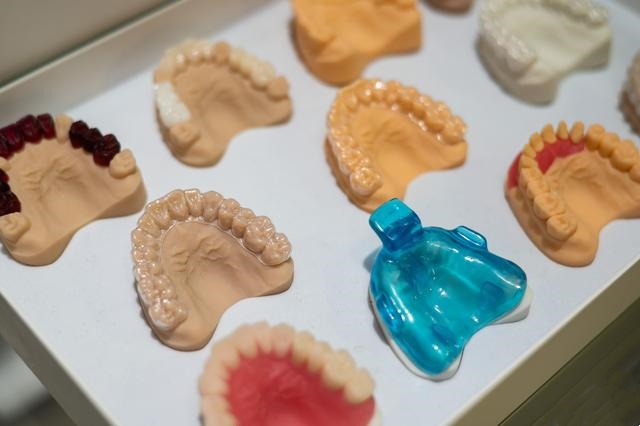Revolutionizing Dentistry: How 3D Printing Transforms Clear Aligner and Sectional Model Production

The field of dentistry has experienced a significant transformation with the advent of 3D printing technology. Traditional methods of creating clear aligners and sectional models were often time-consuming and involved multiple steps, including impression-taking, mold creation, and off-site manufacturing. These processes not only took a considerable amount of time but also limited the level of customization possible. However, the introduction of 3D printing has streamlined these processes, making them faster, more precise, and more cost-effective. This blog post explores how 3D printing is changing the game for clear aligner and sectional model production in dentistry.
The Traditional Workflow for Clear Aligners and Sectional Models
For many years, the production of clear aligners and sectional models followed a standard, multi-step process:
- Impression-Taking: Patients had to undergo a physical impression process, which could be uncomfortable and time-consuming.
- Mold Creation: Dental labs would create plaster or digital models from these impressions.
- Off-Site Manufacturing: Aligners and models were often sent to external labs for production, leading to significant delays.
- Thermoforming and Trimming: Aligners were created through thermoforming processes and then manually trimmed to fit the patient’s teeth.
- Sectional Model Production: For sectional models, the process involved creating full models first, then using a pindex (a precision indexing system) to cut and separate the sections. This method was labor-intensive and required high precision to ensure accurate cuts.
While effective, this traditional method had several drawbacks, including long turnaround times, high costs, and limited customization options. These limitations often led to suboptimal patient experiences and outcomes.
The Rise of Direct Printing for Clear Aligners and Sectional Models
Advancements in 3D printing technology have introduced a more efficient and precise alternative to traditional methods. Direct printing allows dental professionals to create clear aligners and sectional models in-house, significantly reducing production time and costs. Here’s how the process works:
- Digital Scanning: High-resolution intraoral scanners capture detailed 3D images of the patient’s teeth. This digital approach is not only faster but also more comfortable for patients.
- Design and Planning: Using specialized software, dental professionals create a customized treatment plan and design the aligners and sectional models. This step allows for a high degree of precision and customization, ensuring that the aligners and models fit perfectly.
- 3D Printing: The designs are sent directly to a 3D printer, which fabricates the aligners and sectional models using biocompatible materials. The printing process is highly accurate and can produce intricate details.
- Post-Processing: The printed aligners and models are cleaned, cured, and prepared for use. This step ensures that the aligners and models are ready for immediate use, significantly reducing the overall treatment time.
Benefits of Direct Printing for Clear Aligners and Sectional Models
1. Time Efficiency
Direct printing eliminates the need for multiple steps, reducing the time from initial scan to final product. Aligners and sectional models can be printed and ready for use within hours, allowing for same-day treatment initiation and faster overall treatment times. This efficiency is a game-changer for both dental practices and patients.
2. Cost-Effectiveness
By bypassing external labs and reducing the number of production steps, direct printing significantly lowers costs. Practices can save on lab fees and material costs while maintaining control over the quality of the final product. This cost reduction makes clear aligner treatment and sectional models more accessible to a broader range of patients.
3. Precision and Customization
3D printing technology offers unparalleled precision, ensuring that aligners and sectional models fit perfectly. This level of customization leads to better treatment outcomes and improved patient comfort. The ability to make precise adjustments based on digital models allows for optimal fit and function.
4. Flexibility and Iterative Adjustments
Digital workflows allow for easy modifications and refinements to aligner and model designs. Dentists can quickly make adjustments based on patient feedback or treatment progress, ensuring optimal results. This flexibility is a significant advantage over traditional methods, where making changes often required starting the process over.
Challenges and Considerations
While direct printing offers numerous advantages, it also presents some challenges:
1. Material Limitations
Some 3D printing materials may not yet match the strength and durability of traditional materials. Dental professionals must carefully select materials that meet the required standards for clinical use. Ongoing research and development are focused on improving material properties to meet these needs.
Looking for reliable resins? Dental Lab Shop offers the dentistry’s broadest range of 3D printing resins, validated for every clinical and laboratory application, from basic casting model to gingvia fabrication.
2. Technical Expertise
Operating a 3D printer and managing the digital workflow requires technical knowledge. Practices may need to invest in training to ensure staff can effectively use the technology. However, as the technology becomes more user-friendly, the learning curve is expected to decrease.
3. Regulatory Compliance
Dental products must adhere to strict regulatory standards. Practices must ensure that their 3D printing processes and materials comply with all relevant regulations and certifications. Staying updated with regulatory requirements is crucial for the safe and effective use of 3D-printed dental products.
The Future of 3D Printing in Dentistry
As 3D printing technology continues to evolve, its applications in dentistry are expected to expand. Future advancements may include:
- Improved Materials: New materials with enhanced strength, durability, and biocompatibility.
- Increased Precision: Higher-resolution printers and more advanced software for even more precise designs.
- Wider Adoption: As costs decrease and technology becomes more accessible, more dental practices will integrate 3D printing into their workflows.
Conclusion
3D printing has the potential to transform dental care by making it faster, more precise, and more affordable. While challenges remain, the benefits of direct printing are clear. As the technology matures, we can expect to see even greater advancements in the field of digital dentistry, ultimately leading to better patient outcomes and a more efficient dental practice.


